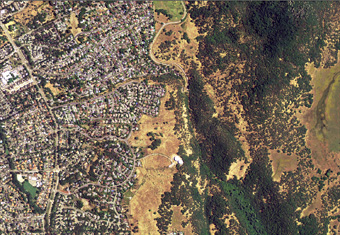

Abstract
Low-density, or exurban, residential development is expanding rapidly throughout the rural landscapes of the United States, with important consequences for wildlife and biodiversity. Labeled ‘rural sprawl,’ this trend is especially pronounced in the American West, where rural populations are growing more rapidly than urban populations in over 60 percent of counties. Conservation development – which protects or restores the ecological resources of a property and restricts compatible housing development to the remainder of the site – has emerged as a promising strategy for conserving wildlife habitat in rural landscapes. Ecological evaluations of conservation development projects have been mixed, but new design guidelines offer an opportunity to standardize project characteristics and improve the outcomes for conservation.
Most conservation development guidelines address choices that designers and developers make at the site-level, such as where to cluster housing and at what density. Drawing on theories and methods from landscape ecology and connectivity science, my research will examine the effectiveness of these site-level design choices for protecting wildlife habitat connectivity at the landscape-level. In a case study of the southern Rocky Mountains in Colorado, I will: (1) review and evaluate conservation development standards and ordinances, (2) explore the potential for regional green infrastructure planning to guide conservation development designs, (3) use simulation models to forecast the spatial patterns of development that result from the application of different design standards, and (4) analyze results of the build-out scenarios for their cumulative effects on wildlife movement and habitat connectivity. The results of this project will contribute to the revision of conservation development standards, identify design strategies likely to yield the greatest benefits for conservation, and inform the implementation of broad-scale wildlife conservation policies, such as the Western Governors’ Association’s Wildlife Corridors Initiative.
